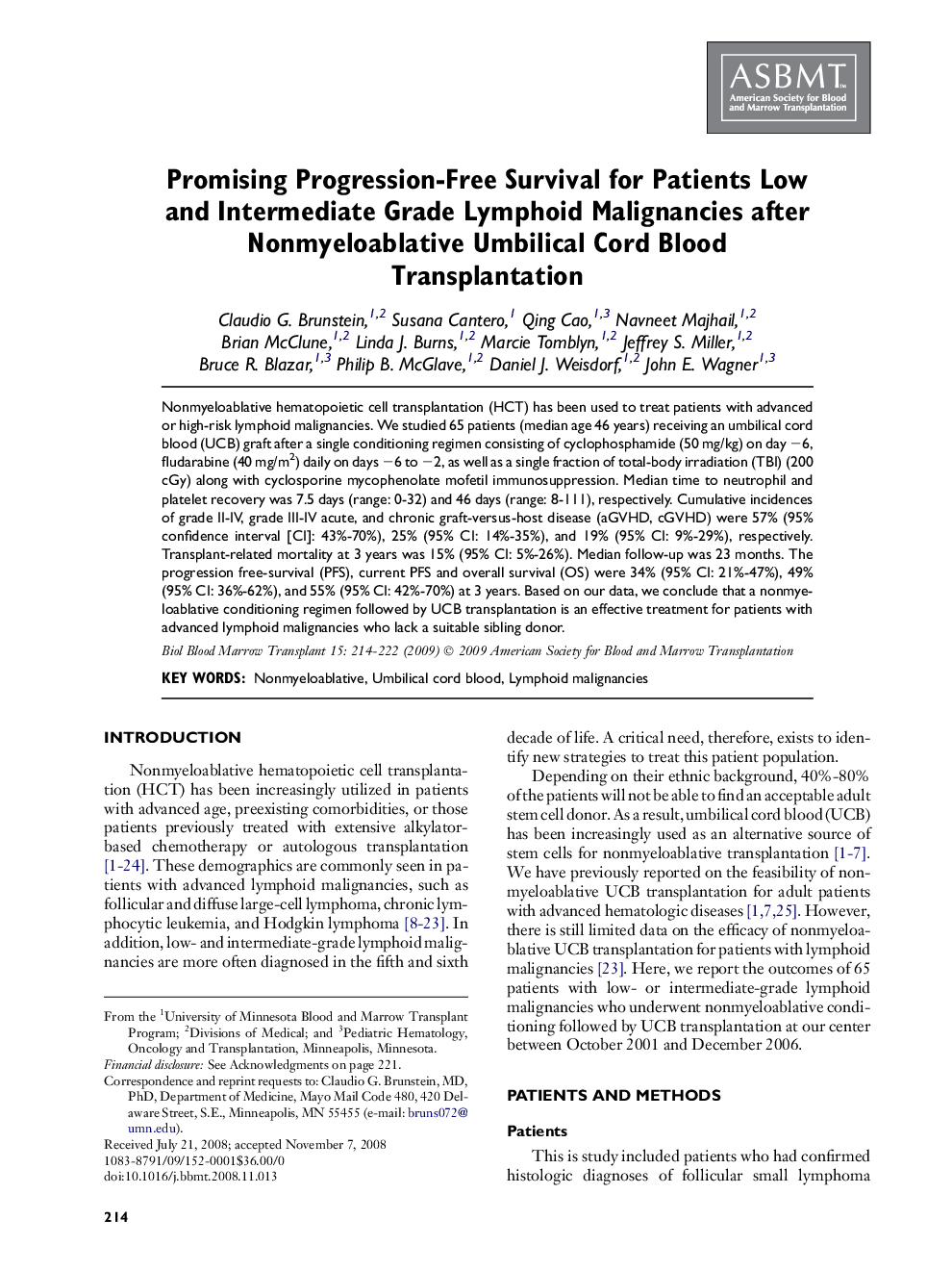| Article ID | Journal | Published Year | Pages | File Type |
|---|---|---|---|---|
| 2105604 | Biology of Blood and Marrow Transplantation | 2009 | 9 Pages |
Nonmyeloablative hematopoietic cell transplantation (HCT) has been used to treat patients with advanced or high-risk lymphoid malignancies. We studied 65 patients (median age 46 years) receiving an umbilical cord blood (UCB) graft after a single conditioning regimen consisting of cyclophosphamide (50 mg/kg) on day −6, fludarabine (40 mg/m2) daily on days −6 to −2, as well as a single fraction of total-body irradiation (TBI) (200 cGy) along with cyclosporine mycophenolate mofetil immunosuppression. Median time to neutrophil and platelet recovery was 7.5 days (range: 0-32) and 46 days (range: 8-111), respectively. Cumulative incidences of grade II-IV, grade III-IV acute, and chronic graft-versus-host disease (aGVHD, cGVHD) were 57% (95% confidence interval [CI]: 43%-70%), 25% (95% CI: 14%-35%), and 19% (95% CI: 9%-29%), respectively. Transplant-related mortality at 3 years was 15% (95% CI: 5%-26%). Median follow-up was 23 months. The progression free-survival (PFS), current PFS and overall survival (OS) were 34% (95% CI: 21%-47%), 49% (95% CI: 36%-62%), and 55% (95% CI: 42%-70%) at 3 years. Based on our data, we conclude that a nonmyeloablative conditioning regimen followed by UCB transplantation is an effective treatment for patients with advanced lymphoid malignancies who lack a suitable sibling donor.
